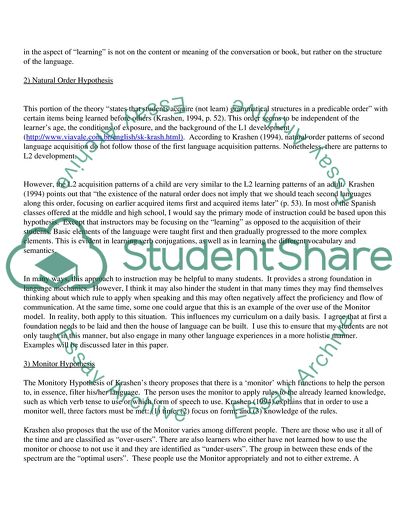Cite this document
(Stephen Krashens Five-Point Theory of Second-Language Acquisition Case Study, n.d.)
Stephen Krashens Five-Point Theory of Second-Language Acquisition Case Study. https://studentshare.org/education/1707530-krashens-model
Stephen Krashens Five-Point Theory of Second-Language Acquisition Case Study. https://studentshare.org/education/1707530-krashens-model
(Stephen Krashens Five-Point Theory of Second-Language Acquisition Case Study)
Stephen Krashens Five-Point Theory of Second-Language Acquisition Case Study. https://studentshare.org/education/1707530-krashens-model.
Stephen Krashens Five-Point Theory of Second-Language Acquisition Case Study. https://studentshare.org/education/1707530-krashens-model.
“Stephen Krashens Five-Point Theory of Second-Language Acquisition Case Study”. https://studentshare.org/education/1707530-krashens-model.


